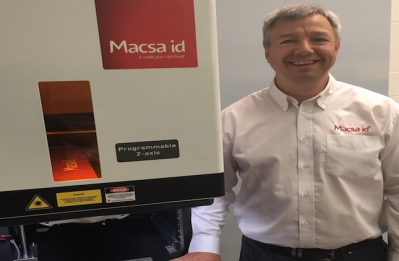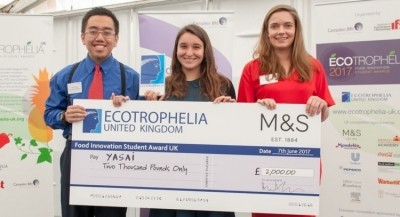New lasering technology could write tags directly on food

Houston-based Rice University scientists created the laser-induced graphene (LIG), which it has called “edible electronics”.
The lab of chemist James Tour has investigated ways to write graphene patterns onto food and other materials to embed conductive identification tags and sensors into the products themselves. The process turns anything with the proper carbon content into graphene.
“This is not ink,” Tour said. “This is taking the material itself and converting it into graphene.”
Food labelling
This means the laser process could be used to label foodstuffs with information such as country of origin and use-by dates.
Tour said: “Perhaps all food will have a tiny radio-frequency identification tag that gives you information about where it has been, how long it has been stored, its country and city of origin and the path it took to get to your table.”
He said LIG tags could also be sensors that detected E.coli or other microorganisms on food.
“They could light up and give you a signal that you don’t want to eat this,” Tour said. “All that could be placed not as a separate tag on the food, but on the food itself.”
Laser beam
The laser used a beam that allowed the researchers to write LIG patterns into cloth, paper, potatoes, coconut shells and cork, as well as toast.
“We also found we could take bread or paper or cloth and add [a] fire retardant to them to promote the formation of amorphous carbon,” said Rice graduate student Yieu Chyan, co-lead author of the paper.
“Now we’re able to take all these materials and convert them directly in air without requiring a controlled atmosphere box or more complicated methods.”














